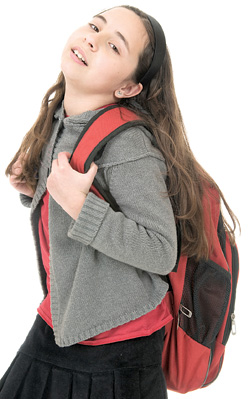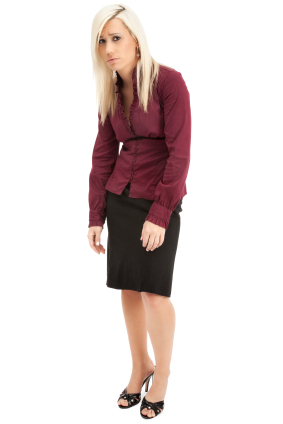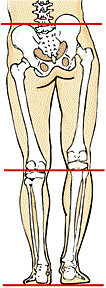What Causes Scoliosis?

 Scoliosis affects approximately 4% of of the population. These scoliosis cases fall into two groups: Nonstructural Scoliosis and Structural Scoliosis. To determine what causes scoliosis, you must first determine what type of scoliosis.
Scoliosis affects approximately 4% of of the population. These scoliosis cases fall into two groups: Nonstructural Scoliosis and Structural Scoliosis. To determine what causes scoliosis, you must first determine what type of scoliosis.
Nonstructural vs Functional Cause of Scoliosis
This type of scoliosis is caused by a temporary condition and the spine is otherwise normal. The curvature occurs as the result of another problem and usually goes away once that problem is addressed.
Leg length discrepancy can cause scoliosis. If one leg is longer than the other the spine can become curved as the body leans to compensate for the difference.
Muscle spasms can cause minor but reversible scoliosis if the spine gets pulled in one direction by the spasming of a major back muscle. A key to determining that the scoliosis is due to spasm is the lack of twisting of the spinal bones that are a hallmark of Adolescent Idiopathic Scoliosis, the most common form of child scoliosis.
the result of another problem and usually goes away once that problem is addressed.
Leg length discrepancy can cause scoliosis. If one leg is longer than the other the spine can become curved as the body leans to compensate for the difference.
Muscle spasms can cause minor but reversible scoliosis if the spine gets pulled in one direction by the spasming of a major back muscle. A key to determining that the scoliosis is due to spasm is the lack of twisting of the spinal bones that are a hallmark of Adolescent Idiopathic Scoliosis, the most common form of child scoliosis.
Structural Scoliosis
Structural scoliosis is the most common type of scoliosis. It involves spinal rotation as well as the side-to-side curvature. It also affects the structure of the spine and is therefore considered permanent, unless treatment is initiated. Structural scoliosis is typically caused by a syndrome or disease, an inherited connective tissue disorder, or it can occur on its own.Types of Structural Scoliosis
Congenital scoliosis is the type of scoliosis that is present from birth. This form of scoliosis is rare and occurs when the bones in the spine form abnormally as the fetus is developing in the womb. A common cause of congenital scoliosis is a hemivertebra, a rare condition where only one side of the vertebra (spinal bone segment) develops. Read more about Congenital Scoliosis > Degenerative Scoliosis or “Adult-onset Scoliosis” can result from the arthritis that forms in the spine due to aging, or from traumatic bone collapse due to illness or injury, previous major back surgery, or osteoporosis (thinning of bone tissue and loss of bone density over time). Read more about Degenerative Scoliosis >Idiopathic Scoliosis
In most cases the exact cause of scoliosis is unknown and is therefore referred to as Idiopathic Scoliosis. More than 85% of people with scoliosis have idiopathic scoliosis, the majority of which are adolescent girls. Idiopathic scoliosis is broken down into subgroups based on the age when the scoliosis developed.- Infantile Idiopathic – less than 3 years of age. This form of scoliosis shows up in a very young child, usually as soon as the child can stand upright and begins walking.
- Juvenile Idiopathic Scoliosis – diagnosed from 3 to 10 years of age
- Adolescent Idiopathic Scoliosis (AIS) – 10 – skeletal maturity
- Adolescent Idiopathic Scoliosis in an Adult (ASA) – This is seen when the patient had scoliosis as a child but is now skeletally mature, they are now an adult with adolescent scoliosis.
- cerebral palsy
- poliomyelitis
- muscular dystrophy and other myopathies
- Injury
- Certain infections
- Tumors
- Metabolic diseases
- Connective tissue disorders
- Rheumatic diseases